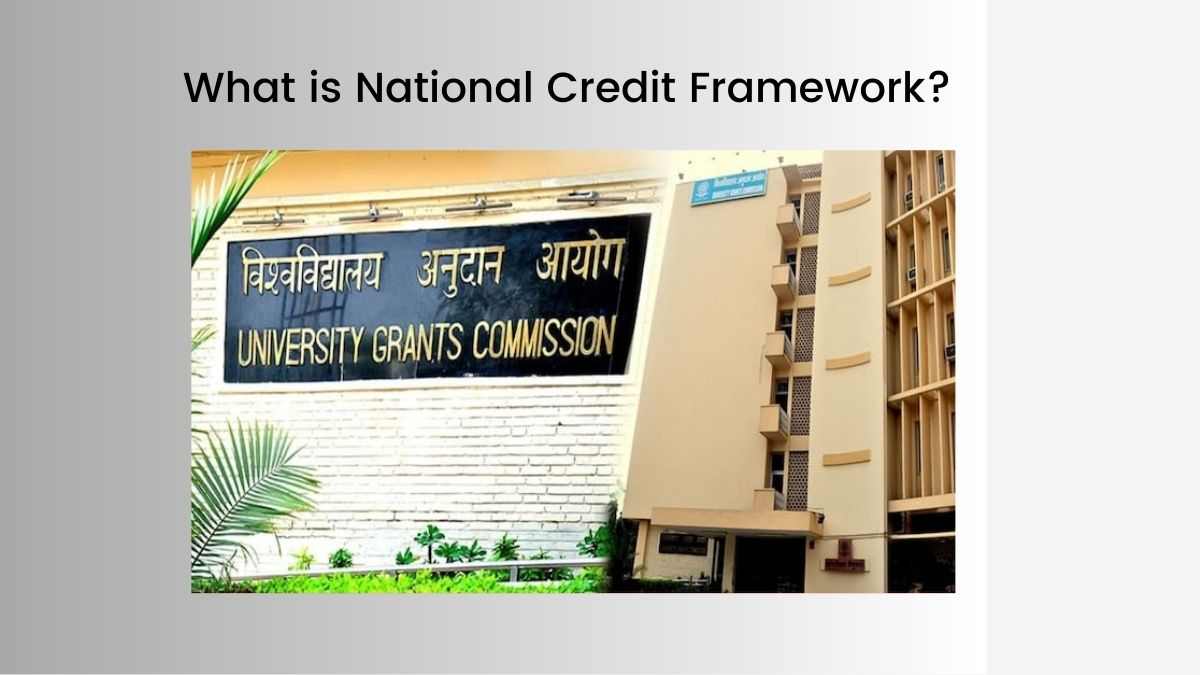The final draft of the National Credit Framework (NCrF) for school education and higher education was released by the University Grants Commission (UGC) on Monday. This newly released framework has been explained by UGC Chairperson Mamidala Jagadesh Kumar. In this article, she will learn about the crucial aspects of this framework.
What is the National Credit Framework (NCrF)?
Under the recently released National Credit Framework (NCrF), students can now earn educational credits through various aspects of learning, whether offline, online or blended. This framework will be followed by all educational institutions. It is drafted in accordance with the National Education Policy 2020 (NEP2020) which sheds light on the integration of academic education and vocational learning.
To ensure lifelong learning, the NCrF offers a way to ensure consistency between these two streams. The framework will offer students the flexibility to leave school and enroll in vocational learning. Post-pandemic, there have been significant changes in the world of education, with the growing trend of homeschooling, however, previously there was no framework to validate students but now they will be validated by NCrF through certificates and diplomas.
How will the framework work?
Briefly explaining the credit system, Jagadesh Kumar said: “Credit is the recognition that a student has completed a course of prior learning, corresponding to a qualification at a given level. Simply put, one credit corresponds to 30 theoretical hours of learning in a two-semester year. Each semester a student is required to earn a minimum of 20 credits. A student obtains 40 credits in one year corresponding to 1200 theoretical learning hours. But students can also earn more than 40 credits in a year.”
The National Credit Framework has divided education into eight levels, from Class 5 to Doctorate. level and credits will be allocated based on the hours of learning in which school education is placed at levels 0 to 4, higher education begins at levels 4.5 to 8 and vocational training is also placed at levels 4.5 to 8. Therefore, there is uniformity between general education and vocational training. which will allow students to change from one educational stream to another.
How can students earn credits?
UGC published the final policy document on Tuesday which states that students can earn credits based on any prior learning they have acquired, including family learning, work experience and group-based learning. This will allow progression into the formal education system. Under the framework, the academic year will be defined by the number of credits students earn that will be awarded to them at the end of each academic year.
Students will receive credit based on their participation in classroom projects, laboratory work, vocational education, social work, Olympiads, performing arts, and internships.
The impact of the new framework on the Indian education system
The National Credit Framework has expanded the scope of the credit system of educational institutions and has opened up a wide range of options for students to obtain credits. Previously, students were not awarded credit based on work experience and participation in extracurricular activities, but now they can earn credit based on these two factors and other factors mentioned above.
Categories: Optical Illusion
Source: ptivs2.edu.vn
